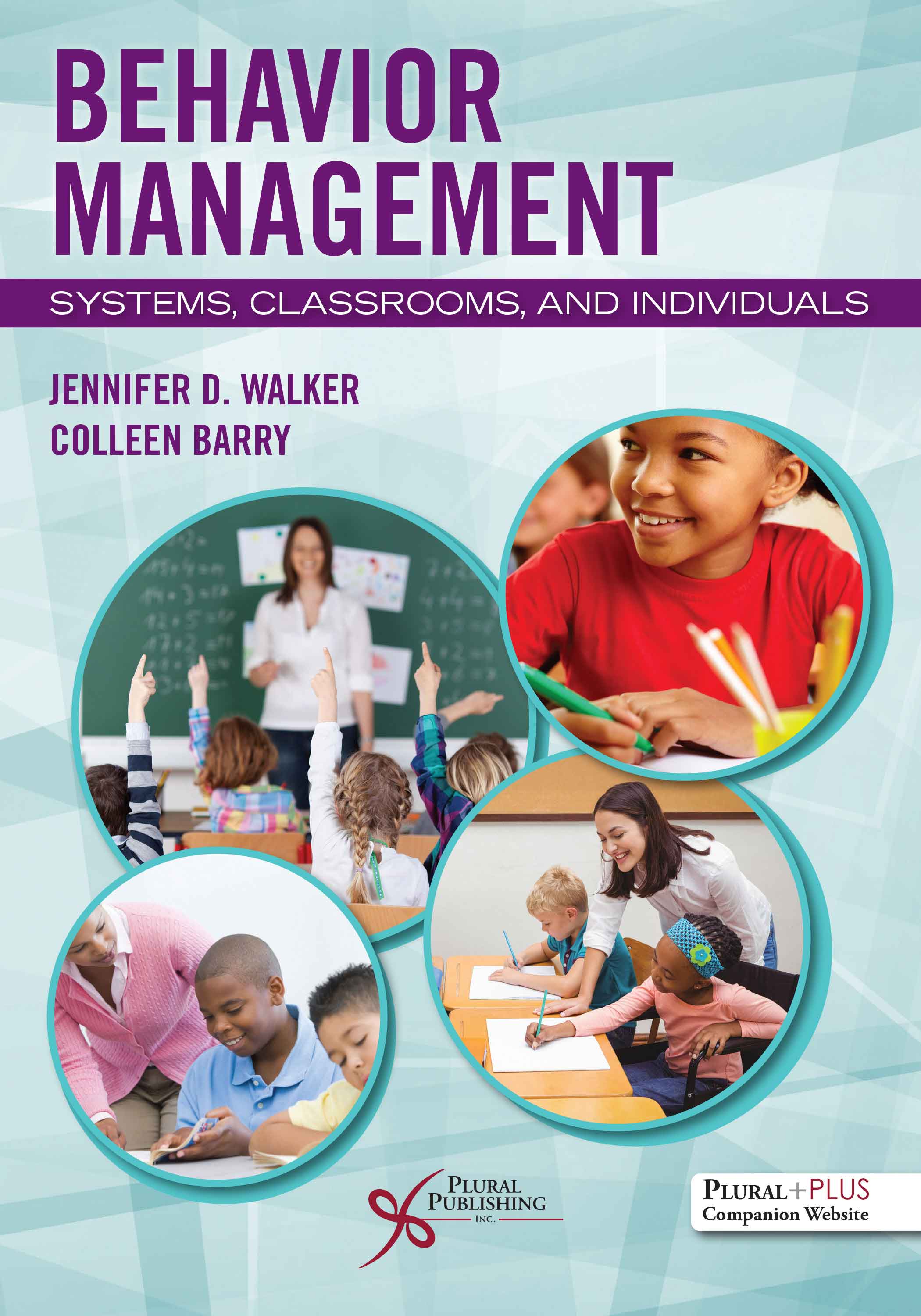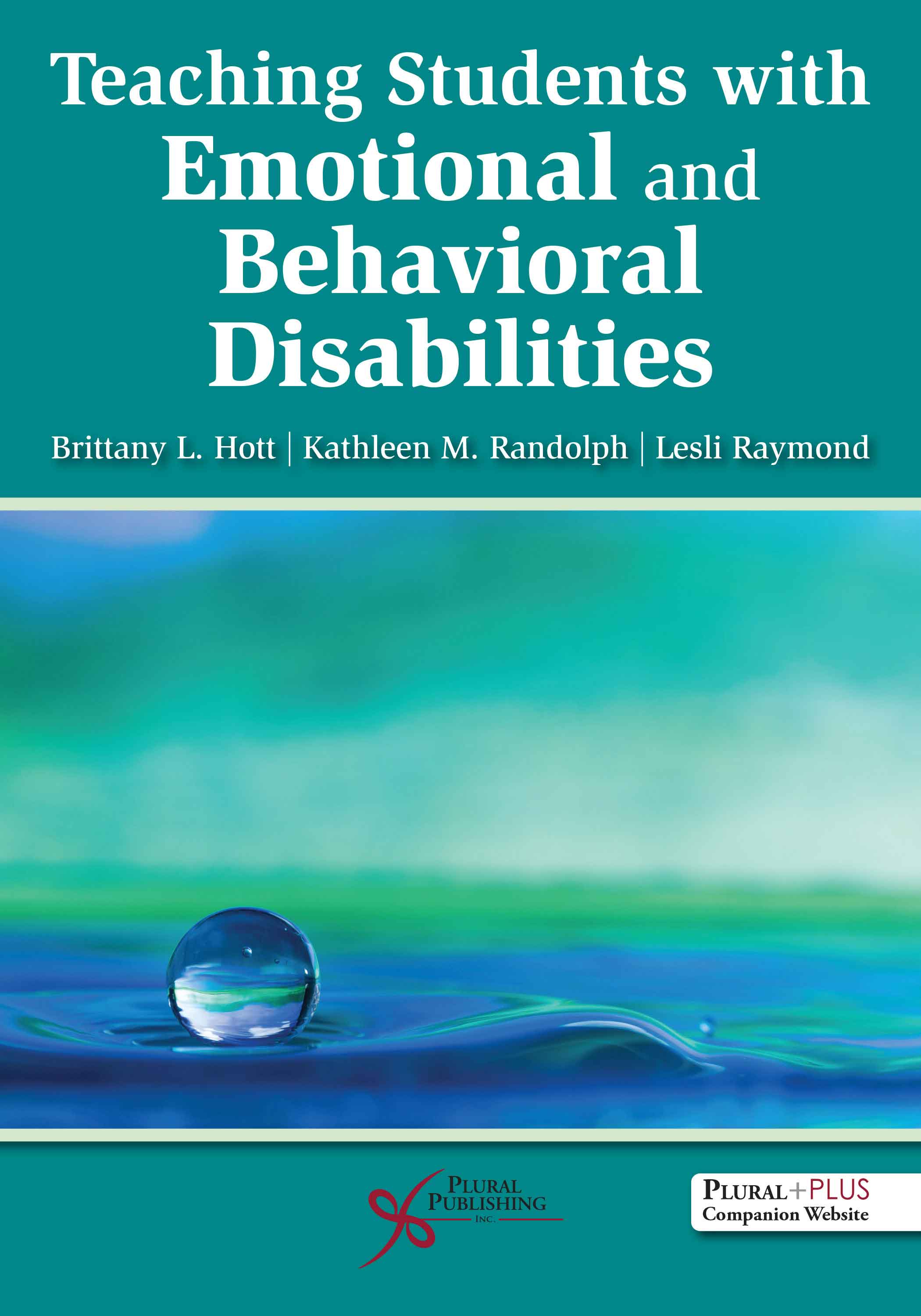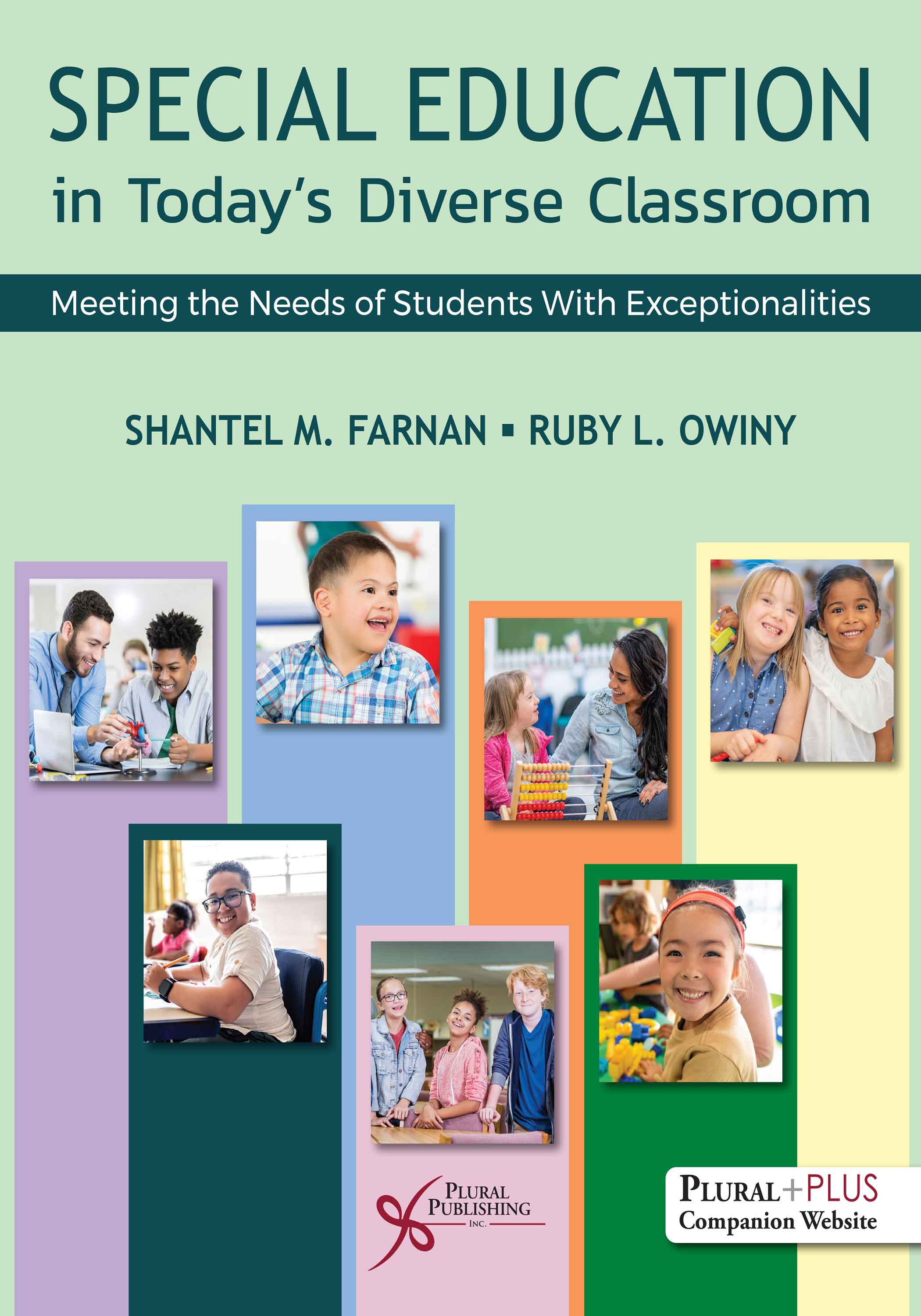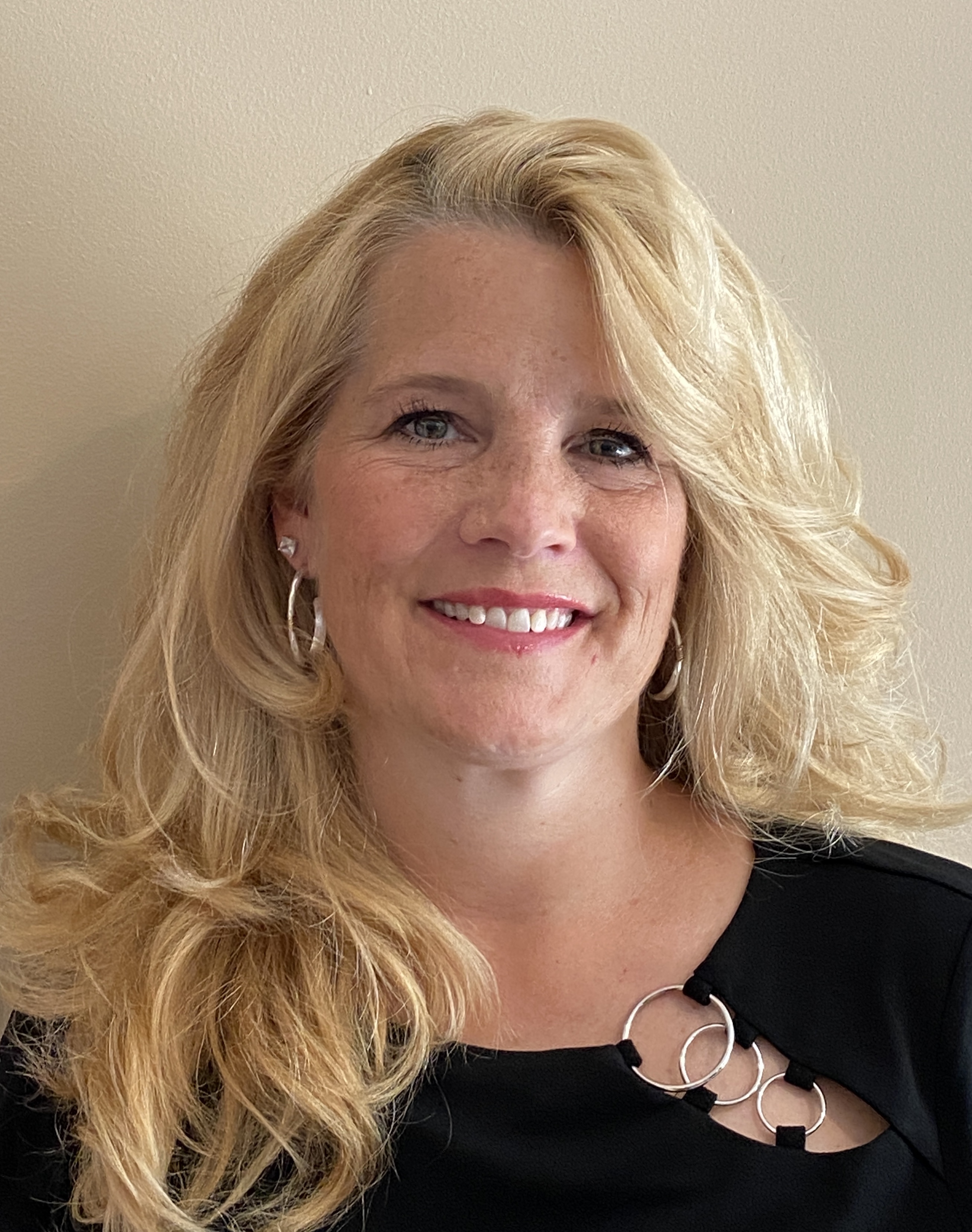
Special Education Law and Policy: From Foundation to Application
First Edition
Jacqueline A. Rodriguez, Wendy Murawski
Details: 567 pages, 2-Color, Softcover, 7" x 10"
ISBN13: 978-1-63550-231-2
© 2022 | Available
For Instructors
Purchase
Understanding the relationship between law, advocacy, and Special Education is crucial for those who educate and advocate on behalf of students with disabilities. Special Education Law and Policy: From Foundation to Application provides a framework for understanding and implementing the law as it applies to students with disabilities and their families. Dr. Rodriguez and Dr. Murawski crafted a textbook that distills complex legal concepts into a digestible format to ensure readers understand their roles as teachers, counselors, administrators, and advocates. Their clear and accessible style of writing is intended for students and practitioners and offers case law and real-world examples to highlight the effective application of both law and policy. With contributions from experienced educators and legal professionals, readers will gather the foundational knowledge they need to support students, families, and schools. This is the text that every administrator, teacher, and advocate will want at their fingertips!
Key Features
- Authentic case studies of challenging issues resolved from different perspectives
- Chapter objectives and summaries to improve retention
- Boxes throughout the text with key terms, concepts, and checks for understanding
- Putting it in Practice and Application in Action boxes with real-world examples from case law
- For Further Consideration sections at the end of each chapter with discussion questions, case law, and additional resources
- A PluralPlus companion website with PowerPoints lecture slides, a test bank, and sample syllabus for instructors
Instructor test bank available on the Respondus Test Bank Network.
Jacqueline Rodriguez & Wendy W. Murawski Discuss Special Education Law and Policy: From Foundation to Application
Reviews
"Jacqueline A. Rodriguez and Wendy Murawski have brought together an impressive array of legal and special education experts as contributors to their book, Special Education Law and Policy: From Foundation to Application. They provide a comprehensive view of U. S. special education law and policy by beginning with a discussion of basic legal concepts and ending with specific and current legal issues in special education. Unlike most other special education law texts, this book makes little assumptions about the readers’ prior knowledge of legal terminology and processes. The structure and features throughout the book, such as the chapter objectives, questions to ponder, case studies, and application in action, and so forth make it an ideal textbook. I highly recommend this book."
—Mary Anne Prater, PhD, Professor & Dean, David O. McKay School of Education, Brigham Young University
"This comprehensive text integrates foundational knowledge for any educator who serves P-12 students. I appreciate the editors’ and authors’ attending to the history of special education and illuminating how litigation shapes service provision. With this knowledge, educators can implement with nuanced understanding of interrelated laws–some on behalf of multiply-marginalized groups–and proceed with a focus on advocacy and not just compliance.
As a special education teacher educator, I appreciate the structure of the chapters, with each including content, probing questions, examples, and resources. These features provide scaffolded learning opportunities for readers to access content and easily relate to their role in educating students. Additionally, each chapter offers depth and seamlessly connects with the other chapters in the book.
Finally, Drs. Rodriguez and Murawski engaged experts that are both recognized and rising in our field. This was a forward-thinking approach that will encourage a legacy of continued advocacy and advancement on behalf of students with disabilities."
—Erica D. McCray, PhD, Director & Associate Professor in the School of Special Education, School Psychology, and Early Childhood Studies, University of Florida
"Special Education Law and Policy is a thorough and accessible explanation of one of the most challenging areas in education practice today - unlocking the potential of students with disabilities. This extraordinary book demystifies a system which too often scares and overwhelms educators and parents. Each chapter not only discusses statutes and regulations but also provides several real-life examples which create context for how the law works and help readers think about how the law would apply to the situations they face every day.
Most importantly, this book firmly grounds today's practice in the history of disability and education advocacy - a history rich with amazing bravery and actions of educators, parents and individuals themselves on behalf of all students with disabilities. Only when we have a shared and solid understanding of the rights and responsibilities that our children, families and educators have under the law, can we truly push our systems to innovate and activate the spirit of the law. Special Education Law and Policy is a must read for any educator who believes we can improve our systems to ensure they unlock the strengths and potential of all of our students with disabilities, increase their achievement, and help them thrive."
—Lindsay E. Jones, President of the National Center for Learning Disabilities
"The authors have assembled a diverse group of experienced contributors who provide a comprehensive and authoritative text written in such a manner which is accessible to a wide audience including family members, educators, advocates, and attorneys. Each chapter begins with a clear set of objectives and contains deep content knowledge, supporting litigation and case law, and practical examples. I especially appreciated the chapter additions such as, 'Checks for understanding,' 'Putting it in practice,' and 'Questions to ponder;' again thinking about how I might use this resource in a credential or graduate program. The field of special education is so complex with deep historical roots, critical legislative mandates, and complex laws, and regulations. But at the heart of special education is ensuring that students with disabilities are provided an appropriate education alongside their nondisabled peers. The authors and their contributors have provided an invaluable resource to educators and others to help achieve this goal."
—Marquita Grenot-Scheyer, Assistant Vice Chancellor, Educator Preparation and Public School Programs, California State University, Office of the Chancellor
"This book is unique in regard to the range of topics that are addressed. Chapters provide thorough reviews of special education law from a very broad perspective, addressing how the legal system works and the history of special education law. The focus then narrows to address how this legal context has resulted in influential federal laws including IDEA, Section 504, ADA, and ESSA. Chapters then get into practical issues at a local level related to the application of these laws in schools and classrooms by addressing topics such as developing IEPs, addressing LRE placements and discipline issues, and ensuring procedural safeguards are in place. This broad range of content makes this book an excellent reference to have available when addressing the important implications of special education law. [...]
It is clear that chapter authors have a deep knowledge of both the technical aspects of special education law, as well as how this information is applied in schools and other settings. This makes chapters come alive with practical examples that illustrate technical aspects of special education law. The chapters in this book are written in a way that makes information regarding the technical aspects of special education law accessible to a broad audience, while also providing practical examples of the application of this information."
—James McLeskey, University of Florida
"Exceptionally well-written, organized and presented, Special Education Law and Policy: From Foundation to Application is an ideal textbook that is especially and unreservedly recommended for the personal reading lists of parents, special education advocates, social workers, school counselors and administrators, as well as school district, college and university library Special Education Administration collections and supplemental curriculum studies lists."
—Library Bookwatch (June 2021)
Foreword by Jane E. West, PhD
Preface
Contributors
Reviewers
Chapter 1. How the U.S. Legal System Operates
Amy W. Casey and Wendy W. Murawski
Chapter Objectives
An Introduction to the Law
Defining Key Roles
Lawyers
Educational Advocates
Guardian Ad Litem
Administrative Law Judges and Hearing Officers
School Personnel
Defining Legal Terminology
Common Legal Terms and Concepts
Common Special Education Terms and Concepts
Sources of Law
Constitutional Law
Statutory Law
Case Law
Regulatory Bodies
U.S. Department of Education (USDOE)
Office for Civil Rights (OCR)
Areas of Law
Criminal Law
Civil Law
Navigating the Judicial System
Determining One’s Standing
Interpreting the Law
When Federal and State Laws Conflict
When Judges Disagree
When Appeals Are Necessary
When the “Spirit of the Law” Is Argued
When Due Process Is Invoked
When Holdings or Rulings Are Made
Chapter 1 Summary
For Further Consideration
Questions to Ponder
Cases to Consider
Resources to Review
References
Chapter 2. Historical Foundations of Special Education Law: A Civil Rights Movement
Edwin Martin and Jacqueline A. Rodriguez
Chapter Objectives
Introduction
Early Treatment of People with Disabilities
Institutions for the Mentally Ill
The Undesirables Act
Eugenics and Sterilization Movements
Early Schools for the Deaf and Blind
Historical Context for the Federal Role in the Education
Elizabeth Farrell and the Henry Street School
Compulsory Education
Segregated Education: Separate but Equal
Opening the Door to a Federal Investment in Public Education
Barriers to Federal Educational Aid for Elementary and Secondary Schools
A Basis for Federal Aid to Students with Disabilities
Galvanizing the Special Education Movement as a Civil Rights Movement
The Rolling Quads
The Carey Hearings
Joint Commission on Mental Health of Children
Court Decisions Establishing Equal Treatment for Students with Disabilities
The Legislative Path Toward Educating Students with Disabilities
The Vocational Rehabilitation Act of 1973
The Call to Educate Every Student with a Disability by 1980
The Movement Toward a National Goal Within the Legislative Branch
Regulating P.L. 94-142, the Education for All Handicapped Children Act of 1975
Challenges to Enforcing P.L. 94-142
Chapter 2 Summary
For Further Consideration
Questions to Ponder
Cases to Consider
Resources to Review
References
Chapter 3. Tenets of the Individuals with Disabilities Education Act (IDEA)
Christine A. Hayashi
Chapter Objectives
Introduction
Foundations of the Guiding Principles of the IDEA
Early Caselaw and Legislation
The Rehabilitation Act of 1973
The Education for All Handicapped Children Act, P.L. 94-142
Early Intervention
The IDEA and the ADA
Guiding Principles of the Statute Today: IDEA 2004
Definition of Terms
Basic Tenets of the IDEA
Chapter 3 Summary
For Further Consideration
Questions to Ponder
Cases to Consider
Resources to Review
References
Chapter 4. Tenets of Section 504 of the Rehabilitation Act of 1973
David F. Bateman, Anne Papalia, and Jacquelyn Chovanes
Chapter Objectives
Introduction
Foundations of Section 504
Purpose and Development of Section 504
Who Is Protected Under Section 504? Definition of a Person with a Disability
Major Principles of Section 504
Section 504 in Educational Institutions
How Section 504 Compares to IDEA in Schools
School District Responsibilities Under Section 504
Examples of Section 504 Violations in Schools
Grievance Procedures Regarding Identification, Evaluation, or Educational Placement
Discrimination Complaints
Section 504 Enforcement
Section 504 Hearings
Office for Civil Rights’ Responsibilities
Section 504 Sanctions
Chapter 4 Summary
For Further Consideration
Questions to Ponder
Cases to Consider
Resources to Review
References
Chapter 5. Tenets of the Americans with Disabilities Act
Paula E. Chan
Chapter Objectives
Introduction
The Americans with Disabilities Act
Title I: Employment
Title II and III: Access for Public Entities and Private Schools
The ADA Amendment Act
Regulatory Bodies
The Equal Employment Opportunities Commission
U.S. Department of Education
U.S. Department of Justice
Interpreting the Law
Olmstead v. L.C. (1999)
Fry v. Napoleon Community Schools (2017)
Potential Implications for PK–12 Schools
Transition Planning
Navigating the Judicial System
Filing a Complaint with the Equal Employment Opportunities Commission
Filing a Complaint with the Office for Civil Rights
Chapter 5 Summary
For Further Consideration
Questions to Ponder
Cases to Consider
Resources to Review
References
Chapter 6. Every Student Succeeds Act as It Applies to Special Education
Sarah A. Nagro, Andrew M. Markelz, and Richelle E. Davis
Chapter Objectives
Introduction
Elementary and Secondary Education Act of 1965 (ESEA)
ESEA in Context
Major Provisions of ESEA
Impact of ESEA on Students with Disabilities
ESEA Summary
Improving America’s Schools Act of 1994 (IASA)
IASA in Context
Major Provisions of IASA
Impact of IASA on Students with Disabilities
IASA Summary
No Child Left Behind Act of 2001 (NCLB)
NCLB in Context
Major Provisions of NCLB
Impact of NCLB on Students with Disabilities
Every Student Succeeds Act of 2015 (ESSA)
ESSA in Context
Major Provisions of the ESSA
Impact of ESSA on Students with Disabilities
ESSA Summary
Chapter 6 Summary
For Further Consideration
Questions to Ponder
Cases to Consider
Resources to Review
References
Chapter 7. Who Are Students with Disabilities? Identification, Nondiscriminatory Evaluation, and Eligibility
Sarah Hurwitz, Nicole Rodriguez, and Abigail Dixon
Chapter Objectives
Who Are Students with Disabilities?
Child Find
The Identification and Evaluation Process
Request for Initial Evaluation
Obtain Parental Consent
Conduct the Evaluation
Comprehensive Written Evaluation
Determine Eligibility
Write the IEP
Obtain Parental Consent for Special Education
Reevaluation
Response to Intervention
Tier 1: High-Quality Classroom Instruction, Screening, and Group Interventions
Tier 2: Targeted Interventions
Tier 3: Intensive Interventions
Nondiscriminatory Evaluation
Test Bias
Clinical Application
Disproportionality: Over- and Underrepresentation in Special Education
Causes of Disproportionality
Federal Guidance on Disproportionality
When School Districts Are Out of Compliance
Culturally Responsive IEPs
Interpreting the Law
Hobson v. Hansen (1967)
Diana v. State Board of Education
Larry P. v. Riles (1972)
Parents in Action on Special Education (PASE) v. Hannon (1980) and Crawford v. Honig (1994)
Chapter 7 Summary
For Further Consideration
Questions to Ponder
Cases to Consider
Resources to Review
Eligibility Case Study
References
Chapter 8. Developing an Individualized Education Program
Brenda L. Barrio, Brittany L. Hott, and Kathleen M. Randolph
Chapter Objectives
Introduction
Individualized Education Program
IEP Team Members
Present Level of Academic Achievement and Functional Performance
Goals and Objectives
Accommodations and Modifications
Specially Designed Instruction (SDI)
Least Restrictive Environment (LRE)
Extended School Year Services
Transition
IEP Consent and Parent Involvement
Individualized Family Service Plan
IFSP Team
IFSP Present Levels of Development
Family Statement
IFSP Goals, Objectives, and Benchmarks
Resources
Early Intervention Services
Transition
Differences Between IFSP and IEPs
Culturally Responsive Practices That Guide the IEP and IFSP
Culturally Responsive Framework
Strength-Based Perspective
Diverse Student and Family Partnerships
Self-Reflection
Chapter 8 Summary
For Further Consideration
Questions to Ponder
Cases to Consider
Resources to Review
IEP Case Study
References
Chapter 9. Who’s at the Table? Role, Responsibilities, Expertise, and Authority
Patricia Ann Popp, Sabrina J. Gross, and Laura Hackett
Chapter Objectives
Introduction
Parents and Guardians
What Is a Parent or Guardian?
Parental Rights Under IDEA
Parental Notice Requirements
The Role of Parents in the Special Education Process
Determining Residency
Training for Parents
Families with Unique Needs
Non-English-Speaking Families
Families Experiencing Homelessness
Families with Students in Foster Care
Military-Connected Families
Special Challenges for Students with Disabilities Who Are Highly Mobile
LGBTQ+ Families
Concluding Thoughts
Including Students in the Special Education Process
The Power of Self-Efficacy
The Importance of Student Voice
Teachers
Related Service Providers
Prereferral
Special Education Evaluation
IEP Development and Implementation
Attorneys and Advocates
Chapter 9 Summary
For Further Consideration
Questions to Ponder
Cases to Consider
Resources to Review
Who’s at the Table Case Study
References
Chapter 10. Redefining a Free Appropriate Public Education
Mitchell L. Yell and Antonis Katsiyannis
Chapter Objectives
Introduction
The Provision of FAPE in Federal Law
Regulations Guiding FAPE
Supreme Court Cases Interpreting FAPE
Board of Education of the Hendrick Hudson Central School District v. Rowley (1982)
A Split in the Circuit Courts Over FAPE
Endrew F. v. Douglas County School District (2017)
Providing a Free Appropriate Public Education for Students in Special Education
Procedural Requirements
Substantive Requirements
Implementation Requirements
Chapter 10 Summary
For Further Consideration
Questions to Ponder
Cases to Consider
Resources to Review
FAPE Case Study
References
Chapter 11. Identifying the Least Restrictive Environment
Cassandra B. Willis, Lauren P. Bruno, LaRon A. Scott, and David F. Bateman
Chapter Objectives
Introduction
The Least Restrictive Environment
Components of the Least Restrictive Environment
Continuum of Alternative Placements
The Least Restrictive Environment in Practice
Legal Guidance on Making Educational Placement Decisions
IDEA Requirements
Case Law
Roncker v. Walter (1983)
Daniel R.R. v. State Board of Education (1989)
Sacramento City School District v. Rachel H. (1994)
Additional Case Law
Chapter 11 Summary
For Further Consideration
Questions to Ponder
Cases to Consider
Resources to Review
LRE Case Study
References
Chapter 12. IDEA Discipline Mandates and Outcomes
Ashley L. White, David Hoppey, and David H. Allsopp
Chapter Objectives
Introduction
Addressing Discipline for Students with Disabilities Within IDEA
Functional Behavior Assessment
Behavior Intervention Plans
Stay-Put
The Protections Provided by a Manifestation Determination Review
Providing Immediate Corrective Action for Students with Disabilities
Restraint and Seclusion
Disparate Discipline Outcomes for Students with Disabilities
Disparate Academic Outcomes Based on Disciplinary Action
Chapter 12 Summary
For Further Consideration
Questions to Ponder
Cases to Consider
Resources to Review
Discipline Case Study
References
Chapter 13. Addressing Discipline Policies and Practices for Students with Disabilities
Ashley L. White, David Hoppey, and David H. Allsopp
Chapter Objectives
Introduction
Zero-Tolerance and Students with Disabilities
Zero-Tolerance: Impetus and Use
Impact on Students with Disabilities
Suspensions and Expulsions Feed the Preschool to Prison Pipeline
Promising Practices for Changing Discipline Disparities for Students with Disabilities
High-Leverage Practices (HLPs) in Special Education
Culturally Responsive Positive Behavior Intervention and Supports
Restorative Justice
Equity Audits
Trauma-Informed Educational Practices
Chapter 13 Summary
For Further Consideration
Questions to Ponder
Cases to Consider
Resources to Review
Discipline Case Study
References
Chapter 14. Postsecondary Outcomes: Transitioning the Student with Disabilities
Heartley B. Huber, Carly B. Gilson, and Heather M. Dulas
Chapter Objectives
Introduction
Unpacking IDEA Requirements for Transition
Yankton v. Schramm: A Case to Clarify Eligibility for Transition Services
Best Practice for Effective Transition Planning and Assessment
Person-Centered Planning: A Framework to Guide Transition Planning
Guidance for Effective and Comprehensive Transition Assessment
Transition Planning and Evaluation
Instructional Focus for Transition
Policy to Support Postsecondary Education and Employment
Improving Access to Postsecondary Career Training and Employment
Individuals with Disabilities Accessing Higher Education
Chapter 14 Summary
For Further Consideration
Questions to Ponder
Cases to Consider
Resources to Review
Transition Case Study
References
Chapter 15. Procedural Safeguards and Remedies for Students with Disabilities and Their Families
Margaret A. Dalton
Chapter Objectives
Introduction
Parent and Student Procedural Rights
Procedural Safeguards Notice to Parents
Right to Examine Records
Right to Participate in Meetings
Importance of Collaborative IEP Meeting Participation
Obtaining an IEE
Written Prior Notice
Impartial Due Process Hearing
The Due Process Hearing Complaint
The Hearing Process
Mediation
Resolution Session
Remedies Available Under IDEA
Remedies for Parents
Remedies for School Districts
Changes in Hearing Procedures
Statute of Limitations
Civil Actions
Chapter 15 Summary
For Further Consideration
Questions to Ponder
Cases to Consider
Resources to Review
Procedural Safeguards Case Study
References
Chapter 16. Current Trends and Legal Issues in Special Education
Jacqueline A. Rodriguez and Wendy M. Murawski
Chapter Objectives
Introduction
Universal Design for Learning Framework
Multitiered Systems of Support (MTSS)
Social-Emotional Learning Curriculum and Supports
Bullying and Harassment
Charter Schools
Charter School Faculty
Responsibility of Charter Schools Serving Students with IEPs
Charter School Students with IEPs
Monitoring Charter Schools Services for Students with Disabilities
Student Privacy and FERPA
Parental Consent to Disclosure
The Intersection of FERPA and IDEA
Displaced Students with Disabilities Due to a National Health Crisis
Congressional Intervention: CARES Act
Guidance for Schools Supporting Students with Disabilities During COVID-19
Online Learning for Students with Disabilities
Immigrants, Refugees, and Migrant Students with Educational Needs
Chapter 16 Summary
For Further Consideration
Questions to Ponder
Cases to Consider
Resources to Review
Trends Case Study
References
Glossary of Acronyms and Terms
Index
Special Education Law and Policy: From Foundation to Application comes with access to supplementary instructor materials on a PluralPlus companion website.
To access the instructor materials, you must contact Plural Publishing, Inc. to be verified as an instructor and receive your access code.
Email: instructormaterials@pluralpublishing.com
Tel: 866-758-7251 (toll free) or 858-492-1555

Educating Students with Autism Spectrum Disorder: A Model for High-Quality Coaching
First Edition
Joshua K. Harrower, Louis G. Denti, Marcia Weber-Olsen
Details: 245 pages, B&W, Softcover, 7" x 10"
ISBN13: 978-1-59756-786-2
© 2016 | Available

IEP Goal Writing for Speech-Language Pathologists: Utilizing State Standards
Second Edition
Lydia Kopel, Elissa Kilduff
Details: 243 pages, B&W, Softcover with layflat binding, 8.5" x 11"
ISBN13: 978-1-63550-202-2
© 2021 | Available

Behavior Management: Systems, Classrooms, and Individuals
First Edition
Jennifer D. Walker, Colleen Barry
Details: 381 pages, 2-Color, Softcover, 8.5" x 11"
ISBN13: 978-1-63550-224-4
© 2022 | Available

Multi-Tiered Systems of Support: Implementation Tools for Speech-Language Pathologists in Education
First Edition
Lesley Sylvan
Details: 247 pages, B&W, Softcover, 7" x 10"
ISBN13: 978-1-63550-294-7
© 2021 | Available

Teaching Students with Emotional and Behavioral Disabilities
First Edition
Brittany L. Hott, Kathleen M. Randolph, Lesli Raymond
Details: 397 pages, Two-Color, Softcover, 7" x 10"
ISBN13: 978-1-63550-225-1
© 2022 | Available

School Programs in Speech-Language Pathology: Organization and Service Delivery
Seventh Edition
Jean Blosser
Details: 457 pages, B&W, Softcover, 8.5 " x 11"
ISBN13: 978-1-63550-611-2
© 2025 | Available

A Guide to School Services in Speech-Language Pathology
Fifth Edition
Trici Schraeder, Courtney Seidel
Details: 313 pages, B&W, Softcover, 8.5" x 11"
ISBN13: 978-1-63550-670-9
© 2026 | Available

Special Eduation in Today's Diverse Classrooms: Meeting the Needs of Students With Exceptionalities
First Edition
Shantel M. Farnan, Ruby L. Owiny
Details: 350 pages, Full Color, Softcover, 8.5" x 11
ISBN13: 978-1-63550-750-8
© 2026 | Coming Soon
Release Date: 09/01/2025


